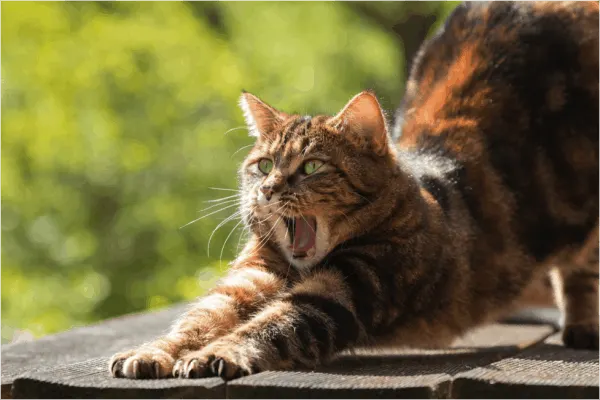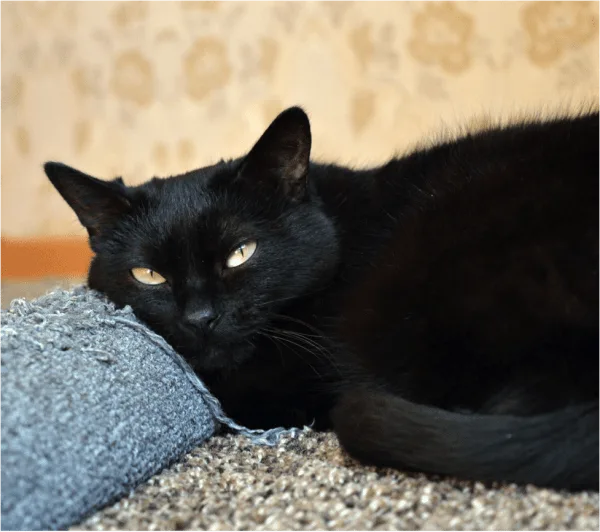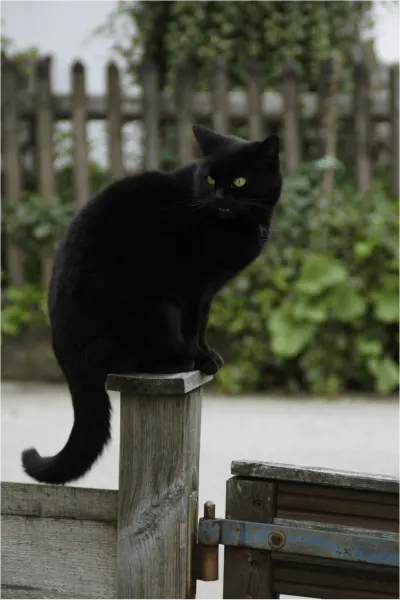Cats have an urge to scratch, it’s an unavoidable fact about our feline friends. More than that, it’s a need that crosses over social, biological, and environmental boundaries. You can do your best to protect your surfaces from their claws, but if they’ve got to do it then they’ve got to do it, and your best bet is to provide them with a scratching post.
If you’ve got one or more cats, you’ll be looking into getting a scratching post (or two!) to ward off any wayward glances towards some of your more precious furniture. Your upholstery, curtains, and carpets will thank you!
But before you head into the nearest shop to purchase a post, or take a plank of wood into the garage to construct your own, there are a few things to consider. In this article, we’ll talk about size, style, material, and the psychology behind the scratching post.
In this article we’ll talk about:
- Why cats scratch
- What are cat scratching posts made of
- What’s a good scratching post
But firstly, what are they made of, and what’s the difference between the types? And why the heck do cats need to scratch in the first place?

Why cats scratch
It’s Healthy!
According to several Cat Health blogs, cats need to scratch for many reasons. Firstly, obviously, it keeps their claws healthy, shredding off older husks and generally keeping them sharp. Much like fingernails, they grow over the cat’s lifetime, so need regular attention. While they will keep their back claws in check with regular grooming, the front ones just need a bit of wearing down on a rough surface.
It’s Good Exercise!
It’s also a basic form of exercise for them. When they use a scratching post, they tend to stretch their entire bodies – if you’ve ever seen a cat do a full body stretch like they’re warming up for the Olympics, that’s them working out every muscle from top to bottom. It’s the sort of action that keeps them limber, and in their prime mouse-catching physique.
It’s Good Communication!
When cats stretch in front of each other, they show a bit of submission, but the act of scratching is also good way for them to mark their territory. The way cats communicate with each other is very physical, and having a scratching post will only help them express themselves further.
Often, in multi-cat households, it’s good to opt for more than one scratching post. This means that they can both have a sense of ownership, and exercise at the same time without feeling anxious about the pecking order.

Scratching Post Materials
Arguably, the best material for a scratching post is one that best mimics the roughness of a natural tree trunk. If your cat spends any time outside, you may have noticed that it will head for the nearest tree, or more likely your prized fence, for a good old scratch. Therefore, anything that approximates this feeling is going to be a surefire winner. They may also paw at softer exposed roots for a similar effect.
Wood
Wood is a good bet, although a varnished 2×4 won’t give them much to hang on to, or work out with. Rather a rougher, tree branch-style object will be more their style. It can also look quite aesthetically appealing, too. Of course, with completely natural wood, you run into the possibility of splinters.
Sisal
A very popular material right now is Sisal Rope. Rough Sisal is a great imitation of tree bark, and provides exactly the right results, sharpening a claw with no problem whatsoever. Being the most quality material on the market, it tends to be a more expensive option, but you can’t argue with its ubiquity on the market nor with its effectiveness. Being fibrous in look, it does bear a worrying resemblance to some carpets, so make doubly sure that your cat knows what’s what before it makes a disastrous error.
Cardboard
On the other end of the price scale, corrugated cardboard scratching posts provide an opportunity for cats to get some of the same satisfaction, even though it’s nowhere near as durable. Often, these come in the form of platforms on the floor, so cats stretch out horizontally longways instead of upwards, vertically.

What To Look For In Scratching Posts
Scratching posts come in many shapes and sizes. They are made of many different materials which provide a multitude of surfaces which you cat can enjoy. Some are incredibly grand, and rise up high, dominating a room. Some are smaller, but sturdy nonetheless.
We at fluffy kitty sometimes advocate for a homemade concoction and in that case, it’s important to be mindful of your little friend: namely, you might get an unsuitable material that either might not provide an adequate scratching surface, or could hurt your kitty if it is too rough.
Remember what we said about cats stretching as much as they scratch? Another problem with homemade is the weight. Store-bought scratching posts (check out our selection here) are designed to be grabbed and pulled upon with the full weight of a cat, while a homemade one might well tip over at the slightest tug, and bring the whole thing crashing down on your feline companion. It’s important to know in order to build a suitable scratching post.
Assuming (hopefully) that this gives them little more than a quick scare, they would then make a quick march to your sofa, or any other furniture that would provide a little more anchorage for their exercise routine.
To be sure to design the right scratching post, check our DIY scratching post! It’s simple and your cat will love it (tested and approved by our beast Yoda).
So What Are Cat Scratching Posts Made Of?
By now, it should be apparent to any cat owner that scratching posts are made of so much more than they appear. While on the surface they seem simply to be a distraction from the destruction of other, more tempting surfaces, they provide many benefits that go beyond the physical.
Whether constructed from wood, cardboard, sisal, or a hybrid of different materials, cat scratching posts allow cats the opportunity to mark territory, express themselves, keep their muscles and claws healthy, and get a bit of aggression out in a controlled environment. They can help with anxiety, and mostly just feel good when being used! So what are they made of? A great deal more than you might expect!
